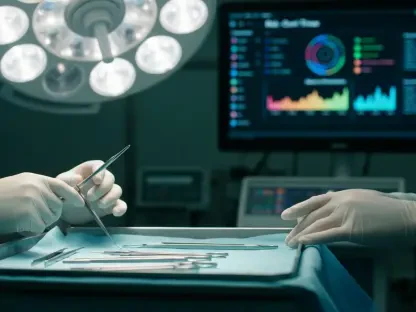A Dynamic Start That Puts Students Bedside Sooner
From textbook to patient room in weeks, not months, the inaugural class at the WVU Medicine Center for Nursing Education moved from orientation to hands-on care with a pace that surprised even seasoned clinicians. That momentum came from a clear playbook: early clinical immersion, high-fidelity simulation, and steady whole-student support that tightened the gap between knowledge and action.
The result was visible on the units at J.W. Ruby Memorial Hospital, where students practiced under close guidance and began forming a professional identity. Moreover, as confidence rose, faculty noted faster recall, cleaner teamwork, and a demeanor that signaled readiness rather than hesitation.
Program Foundations And Context
Built inside WVU Medicine, the diploma model served a focused purpose: train practice-ready nurses who can step into hospital workflows without a long runway. The curriculum took shape with Ruby Memorial leaders, aligning content, equipment, and policies so class time mirrored clinical reality.
Faculty with deep bedside and education expertise anchored that design. In turn, first-semester benchmarks were explicit—safe core skills, solid communication, and consistent clinical judgment—so students knew exactly what progress looked like.
Early Wins, Distinctive Milestones, And Proof Of Progress
Clear outcomes put numbers to the narrative: competency checks were passed, clinical hours were productive, and simulation objectives were met ahead of schedule. In addition, early validations reduced anxiety during hospital weeks and reinforced task sequencing under pressure.
Examples tied it together. Students prepared meds, performed assessments, and executed injections accurately; they placed catheters and feeding tubes with faculty nearby; and they handled multi-step care plans without losing composure.
Transition From Faculty-Led Clinicals To Precepted, One-On-One Rotations
After a brief ramp-up, placements at Ruby Memorial began and responsibility increased in manageable steps. The structured handoff from group clinicals to precepted shifts made the learning curve feel steep but navigable.
Personalized coaching accelerated repetition and feedback. Each student refined technique, learned unit rhythms, and built judgment through real cases rather than hypotheticals.
Mastery Of Core Nursing Tasks In Live Settings
Patient assessments became fluent, medication administration grew precise, and injections were delivered with careful verification. Safety checks were rehearsed until they felt routine.
Under supervision, students placed urinary catheters and feeding tubes, translating lab practice into bedside competence. Each successful attempt reduced hesitation and sharpened focus.
Simulation Achievements Beyond First-Semester Norms
A multi-patient simulation arrived earlier than most programs schedule it, and the cohort managed it with poise. Workload triage, time management, and escalation pathways were tested and strengthened.
Debriefs turned missteps into insight, building clinical judgment through guided reflection. Prioritization and pattern recognition improved with every scenario.
Communication And Teamwork Advances
Role-play with families surfaced tone, timing, and empathy, while interprofessional drills clarified who to call and when. Students learned to frame decisions transparently.
Handoffs tightened using SBAR, and situational awareness improved during busy hours. Language grew concise without losing compassion.
Confidence And Consistency Under Pressure
Exam weeks no longer rattled the group; preparation strategies and tutoring made scores steadier. Clinical peaks felt demanding yet manageable.
Students reported a shift from nervous energy to practiced calm. Readiness showed in body language, eye contact, and follow-through.
What Truly Sets WVU CNE Apart
Training spaces were configured to match Ruby Memorial equipment and workflows, reducing translation errors during clinicals. Familiar monitors, IV pumps, and charting flows cut down the time spent relearning basics.
A practice-forward ecosystem—Skills Unit, Interactive Lab, and Simulation Lab—kept repetition intentional and feedback immediate. The debrief culture rewarded candor and turned near-misses into measurable gains, while cohort cohesion and peer mentoring extended learning beyond formal hours.
Where The Cohort Stands Today
Students met or exceeded first-semester benchmarks, with steady gains in clinical competence and professional communication. Preceptors noted safe habits, clearer reasoning, and growing initiative during routine care.
Tutoring remained active, and stress-relief options like boxing and arts and crafts buffered exam cycles. Faculty-led study strategies kept focus tight as autonomy increased at the bedside.
Reflection And Broader Impacts
Lessons crystallized quickly: early immersion built confidence, simulation fidelity refined judgment, and a supportive network kept performance consistent. The pace was ambitious, yet the structure made it sustainable.
The approach also hinted at a blueprint for onboarding, shrinking transition shock for new nurses and keeping patient care safer. Moreover, a hospital-embedded diploma pathway showed how speed and rigor can coexist when alignment is tight.
Reflection
Strengths included rapid exposure, realistic environments, and an ecosystem that blended academic and psychosocial support. Those pieces worked together rather than in isolation.
Challenges centered on stress in an accelerated track and guarding depth while moving fast. Regular tutoring, wellness activities, and targeted debriefs kept the balance intact.
Broader Impact
Clinical readiness standards shifted toward earlier responsibility with structured oversight. Units felt the difference in smoother handoffs and fewer avoidable delays.
Faster, safer skill acquisition offered a model for similar programs seeking tighter hospital alignment. The workforce pipeline benefited from graduates who arrived ready to contribute.
Conclusion And Next Steps
The semester closed with accelerated competence and growing confidence, driven by early clinical exposure, realistic simulation, and robust support. Momentum, student commitment, and alignment with real practice had set a clear course for continued growth.
Applicants who sought a practice-first path had found a living example of how readiness could be built quickly without losing depth, and the next step was simple: explore details and apply at WVUMedicine.org/CNE.









